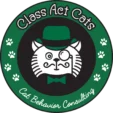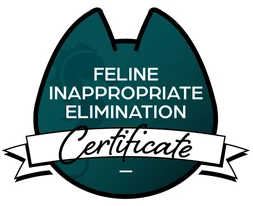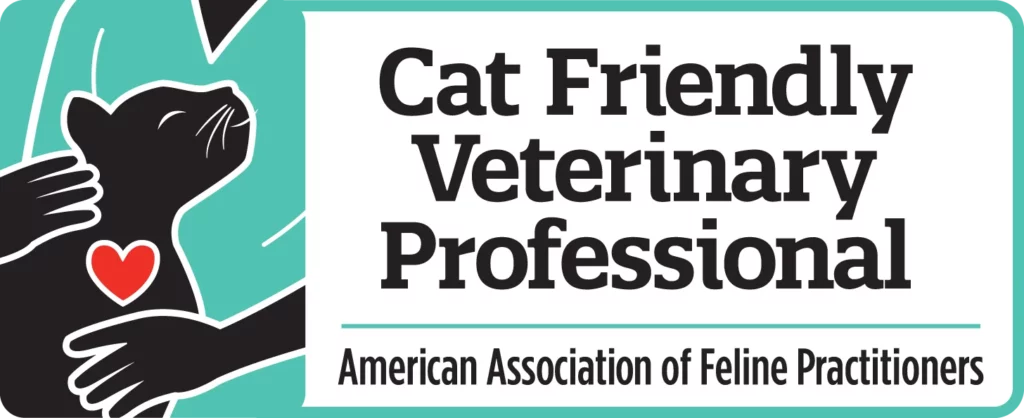As a professional cat trainer and cat behaviorist, I meet a lot of different cats. While 100% of them are cute as heck, some of them present unique challenges when working on training. One of them I hear often is some variation of their cat not being food motivated or being on a restricted diet. People are convinced their cat can’t be trained because they don’t like treats.
While I would argue that all animals are food motivated to some degree as if they don’t eat, they won’t survive, there are some situations where it makes sense to try training a cat without treats or food. What’s a cat trainer to do in these situations? Use a squirt bottle?! (No, the answer to that is a big old no)
Since I get asked this question all the time, I wanted to share a few ideas of what you can use to train your cat if tasty treats are a no go.
What Makes Training Effective?
First, let’s go over a very basic concept in training cats: what makes training work for them? Whether a professional or a casual cat trainer, you need to understand the basics of why you’re doing what you’re doing in order to see results.
Training works by either increasing or decreasing a behavior. Your cat develops an association between an event that occurs (called an antecedent), an action they take (called the behavior), and the result of their action (called a consequence). The most effective methods of training are ones that focus on increasing a behavior by adding something that a cat wants. This is called positive reinforcement if the behavior increases.
The goal of a cat trainer is to get the cat to understand that if they receive a cue to do a particular behavior, they will get a reinforcer if the behavior is performed. Seems pretty simple, right?
Sometimes we use a method of training called marker training. If you’re familiar with clicker training, it’s a form or marker training. Basically, a cat is taught that when they hear or see a specific stimulus (often the sound of a clicker, but there are other options) it always means a reinforcer is following. The target behavior is marked with a click or other stimulus. When it occurs and as the cat repeatedly gets the reinforcer, the behavior will happen more frequently.
Side note: If you’re going the clicker or marker training route, I strongly recommend the Clicino Clicker Ring. It is easy to hold as it sits on your finger so it frees up an extra hand. The sound is quieter than with some other clickers so more skittish cats are less likely to be spooked by it. Everybody benefits, you and your cats!
Why Cat Trainers Use Food And Treats In Training
In order for positive reinforcement to work the cat needs to want to get whatever you’re using to reinforce the behavior. If they don’t, the behavior won’t increase and, by definition, this is not positive reinforcement.
One thing most animals reliably want is food as food is a basic need in order to survive. Cats in particular like meaty foods and treats that are calorie-dense. Think about it like how you may prefer dessert or pizza to a salad. Your cat likewise would probably rather eat some Temptations than their regular food, though this varies based on flavor and texture preference.
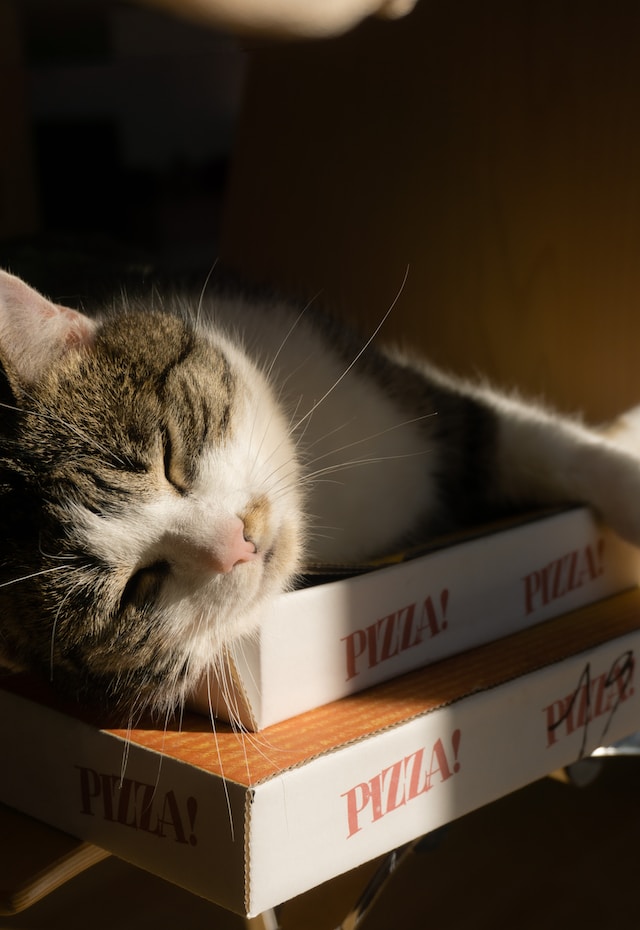
Because cats like these foods so much and are so motivated by them, they work well in training. Another part of their effectiveness is how easy they are to give to a cat. A cat trainer can toss a treat or let them lick a Churu is super convenient. You can just keep some treats in a pocket or treat pouch and you’re good to go!
Why Would You Use Something Besides Treats For Cat Training?
Of course, there are some situations where treats or food don’t make sense as a reinforcer. One common one is that your cat is on a restricted diet. If your vet says your cat needs a prescription diet due to a medical condition, it’s best to listen to them. There may be treats that fit within their diet, but unless you have their approval I wouldn’t risk it.
Another reason a cat trainer may choose a different reinforcer is that the cat prefers something else to food. After all, the learner gets to decide what motivates them. If they prefer to work for something else, then they get to work for something else. It would be the equivalent of you working in exchange for free admittance into a concert instead of money or getting a different form of compensation than a paycheck.
In some situations, it may be really hard to use food as a reinforcer for the situation the cat is being trained in. For example, if a cat trainer is working on cooperative care techniques with their cat and the cat needs to have food withheld prior to surgery, you can’t use treats to train them. Something else will have to do.
What Can A Cat Trainer Use Instead Of Treats?
If for whatever reason you can’t use food to train your cat, which means you need to find another option. What can you use as a reinforcer instead? While this will vary from cat to cat, let’s look at a few ideas of alternative reinforcers.
Attention
If your cat has an annoying behavior that you tend to yell at them for like jumping on the counters, you may have accidentally used this reinforcer before. Cats actually really like humans they’re bonded to and are more willing to work for attention than we give them credit for. Keep in mind that even bad attention can reinforce a behavior which is part of why squirt bottles don’t work as a training method.
To use this reinforcer, praise your cat! It really is that easy to do. That said, cats may not always be willing to work for praise, and depending on your cat’s preferences, you may only find this effective for some behaviors. This can always be used in combination with another reinforcer to make it more effective so don’t feel limited to one type of reinforcer.
Play
When I get consulted on a cat that is hyperactive and has a lot of energy, I’ll often consider using play to reinforce them during a training session. Play is a great tool as cats love to hunt. This accomplishes the goal of getting their energy out and helps them learn.
Play can be a bit awkward to use to train your cat so most cat trainers reserve it for special cases. However, if you want to give it a try, let your cat play with a preferred toy for a few seconds after they do a behavior you want them to do. There’s a bit of an art to how long your cat needs to play for in order for this to work so you may need to experiment with how much play is necessary.
One other drawback to play: it’s not great for situations where your cat needs to be calmed down. If the behavior you’re trying to teach is something to relax your cat, play may be counterproductive.
Brushing
Does your cat love being brushed as much as Class Act Cats’ Chief Purr Officer, Zoloft, does? I used this reinforcer to train him to go to a basket on cue as he goes wild when I bring his glove brush out from hiding. Not all cats love being brushed so if your cat runs to hide when the brush comes out, absolutely do not use this method.
When I used brushing as a reinforcer with Z, one of the more challenging aspects of it was figuring out how many brushes he needed to feel satisfied. If I did too few, he’d give me an annoyed meow like, “Hey, Dad? Keep the good stuff coming.” More importantly from a cat trainer’s perspective was that he wasn’t making as much progress as I’d like with the actual training. Much like with play, this requires some fine-tuning.
Another Behavior
Get ready for some nerdy cat trainer talk with this one! Did you know you can actually use another behavior a cat wants to do in order to reinforce a wanted behavior? In other words, almost any behavior could become a reinforcer if you figure out a way to make it work. That doesn’t mean that it will be practical, but you technically can do it.
The Premack Principle
Using behavior to reinforce another behavior takes advantage of something known as the Premack principle. If you’re familiar with dog training, you may have heard of it. I haven’t heard as many cat trainers discuss the Premack principle, but it applies to other species beyond dogs. The TL;DR version is that access to performing a more likely behavior will reinforce a less likely behavior that comes right before it.
Let’s look at an example that you may be familiar with in humans. While classically the example given is if you eat your vegetables, you can have ice cream for dessert, I think there’s a better example. Ice cream in itself could be a reinforcer and while the behavior of eating it could satisfy the Premack principle, it’s a bit too food related to really differentiate using food as a reinforcement method.
Instead, think back to when you’d come home from school as a kid. Chances are your parents would tell you to do your homework. If they were smart, they would unconsciously use the Premack principle and tell you if you do your homework, you can play video games after. If you didn’t like video games, you can insert whichever activity you liked doing instead, but the principle is the same. The more desirable behavior (playing video games) is contingent upon the less desirable behavior (doing homework) being done so you likely eventually began doing your homework immediately upon returning home so you can play Nintendo!
Side note: Speaking of Nintendo, did you know there’s a cat-themed Mario game for Switch? You can get a cat suit in the game that lets you claw at your enemies! There are even Peach and Mario Cat Amiibos available! Nintendo really knows how to pander to me because I definitely preordered them when they first came out…
Skilled cat trainers can figure out how to use the Premack principle in their training, though it does take a bit of creativity. If you’re in a rut and not sure what else to do, it’s worth considering!
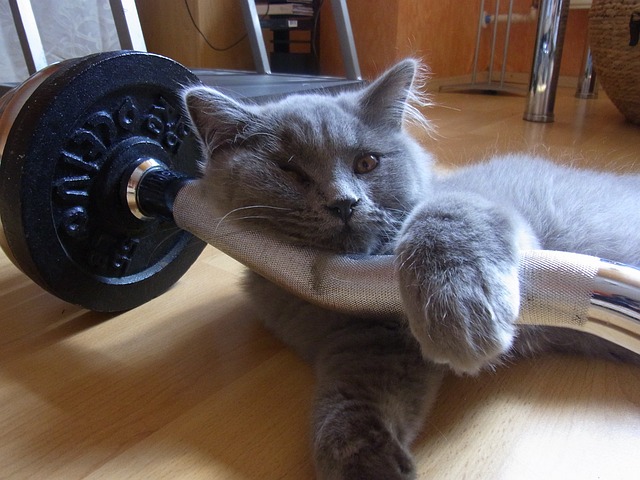
Are Other Reinforcers Just As Good As Food?
You may be wondering, “Okay, great. I can use something besides treats or food to train my cat. But will they work just as well?”
As many of my clients will tell you, the honest answer is, “It depends.” This is probably my favorite way to answer many questions as cats are really freakin’ complex. The best reinforcer for your cat is the one they’ll work for. Professional cat trainers are going to use the reinforcer that motivates the cat to do the behavior so take their lead and listen to your cat.
If you’re stuck in a situation where you can’t use the thing that motivates your cat the most, then you may need to find the thing that motivates them the second most. Once again, this varies from cat to cat. Only you can ultimately decide which reinforcer, food or not, is the best choice based on getting to know your own feline friend.
Looking for more training tips? Check out my post on cat training tools for some suggestions of supplies you’ll need to train your cat effectively.
